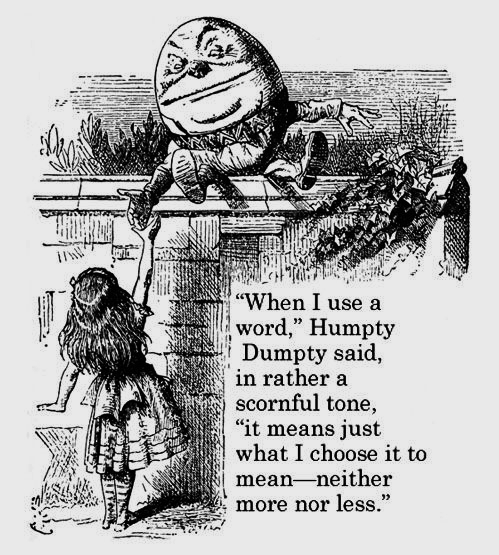
We know that the gospels contain many stories that are based on Old Testament narratives. Jesus raising Jairus’s daughter is clearly developed on similar miracles by Elijah and Elisha; Jesus stilling the storm has rewoven core elements of the story of Jonah; the miraculous birth of Jesus finds its mirror opposites in the miraculous births of patriarchs and judges. Frequently we find New Testament scholars describing this building of stories upon earlier “biblical” accounts to be a special form of Jewish composition called midrash. The term comes with some controversy, however, and it can be helpful if we understand what it means to different people if our intention is to communicate as smoothly and agreeably as possible.
I first became aware that its meaning and usage was not so straightforward in a discussion forum back in 2000 when Mark Goodacre pointed out to his colleagues the following:
Spong should indeed be expected to observe correct scholarly definitions of the term midrash.
(1) Spong is (explicitly) dependent on the work of Michael Goulder who in 1989 had withdrawn his previous usage of the term “midrash” to describe the creative work of the evangelists (see my previous message for bibliographical information). This was as a direct result of Philip Alexander’s critique.
(2) About eight years ago I went to a paper Spong gave in Oxford at which he repeatedly used the term “midrash” to describe Matthew’s creative work in the birth narrative. It was pointed out to him publicly that his use of the term was inaccurate and that his source for the usage, Michael Goulder, had withdrawn it.
(Goodacre, XTalk, 5207)
So Michael Goulder introduced the term to John Shelby Spong but subsequently stopped using the term as a result of a criticism by Philip Alexander. I will return to his criticism that influenced Goulder.
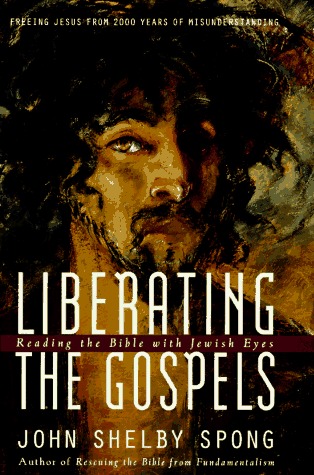 Spong was not as completely tone-deaf to all voices, however, since he did explain afterwards that he himself had decided to at least change the way he used the word:
Spong was not as completely tone-deaf to all voices, however, since he did explain afterwards that he himself had decided to at least change the way he used the word:
I became convinced that I wanted to write my next book on the Jewishness of the Gospels. . . . . My first working title of this new book was The Gospels as Midrash. My editor at HarperCollins, however, discouraged that title for two reasons:
- First, midrash is not a familiar word to the general reader, he said,
- and second, Jewish people use the term midrash in a very strict and limited sense, which was quite different from the way I was using the term.
I had seen that reaction in my closest rabbi friend, Jack Daniel Spiro, the first time I used the term in a public lecture that he attended. I do not ever want to be offensive to my fellow pilgrims within the Jewish tradition, so in this book I have used the word midrash only as the modifying adjective, midrashic, both to indicate the broadness of the way I am employing this concept and also to leave the word midrash to its special Jewish understanding.
(Spong, p. xi)
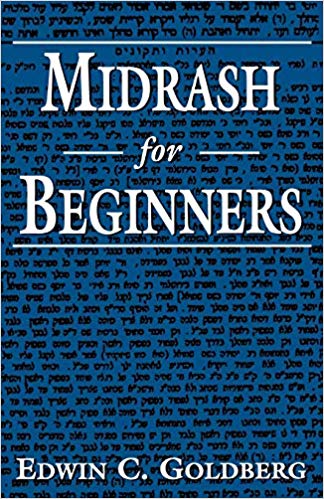 In Edwin C. Goldberg’s Midrash for Beginners we read at the outset
In Edwin C. Goldberg’s Midrash for Beginners we read at the outset
Suffice it to say that there are two general meanings of the term “midrash”:
- It can refer to a process of interpreting Scripture. According to this definition, any comment which is directly or indirectly related to the Bible is midrashic. (There are even those who claim the term for the general process of commenting on any text.)
- The term can also refer to a specific body of classical rabbinic commentary on the Bible, edited from approximately the year 200 of the Common Era (C.E.) to the ninth century. For instance, one can go to a well-stocked Jewish library and find in English translation such works as the Midrash to the Book of Genesis.
(Goldberg, pp. xif)
Note the first meaning brings us back to Spong’s use of the word form “midrashic”. We might wonder, though, if that first meaning is rather too broad. Why not just speak of “interpretation” or “literary borrowing” instead of “midrash”?
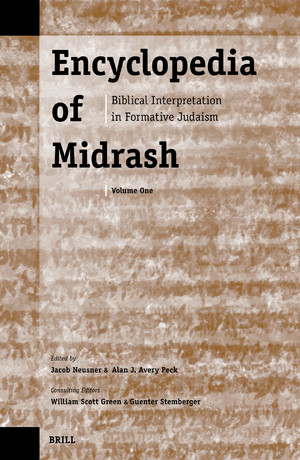 We find a similar question arising with the Encyclopedia of Midrash. In the second volume we find an article New Testament Narrative as Old Testament Midrash by R. M. Price. Price views the gospels as a special form of midrash, haggadic midrash:
We find a similar question arising with the Encyclopedia of Midrash. In the second volume we find an article New Testament Narrative as Old Testament Midrash by R. M. Price. Price views the gospels as a special form of midrash, haggadic midrash:
The line is thin between extrapolating new meanings from ancient scriptures (borrowing the authority of the old) and actually composing new scripture (or quasi-scripture) by extrapolating from the old. By this process of midrashic expansion grew the Jewish haggadah, new narrative commenting on old (scriptural) narrative by rewriting it. Haggadah is a species of hypertext, and thus it cannot be fully understood without reference to the underlying text on which it forms a kind of commentary. The earliest Christians being Jews, it is no surprise that they similarly practiced haggadic expansion of scripture, resulting in new narratives partaking of the authority of the old. The New Testament gospels and the Acts of the Apostles can be shown to be Christian haggadah upon Jewish scripture, and these narratives can be neither fully understood nor fully appreciated without tracing them to their underlying sources, the object of the present article.
(Encyclopedia, p. 534)
That article follows directly upon another by Gary Porton, Midrash, Definitions of. The opening definition that I quote here clearly excludes the gospels as a form of midrash. With my emphasis…
Rabbinic midrash is an oral or written literature composed by the rabbis that has its starting point in a fixed, canonical biblical text. In midrash, this original text, considered the revealed word of God by the midrashist and his audience, is explicitly cited or clearly alluded to. In the scholarly literature, as in Judaism itself, the term midrash is used in three different ways: 1) to refer to individual exegetical pericopae (hence, a midrash on Gen. 1:1), 2) to describe the Rabbinic method of biblical interpretation (hence, a statement such as, “midrash renders Scripture relevant to contemporary needs”), and 3) to designate the compilations of Rabbinic exegetical statements produced in late antiquity (hence, the midrash on the book of Genesis).
(Encyclopedia, p. 520)
Many, surely most, of the gospel narrative units only indirectly relate to Old Testament passages. They do not “explicitly cite or clearly allude to” them.
So far we have gone from some NT scholars have chosen to avoid the term entirely to sliding into the term “midrashic” and wondering exactly what is the origin and nature of the term haggadah.
We surely need to think carefully and clearly about the term and how we decide to use it. No doubt much will depend on our audience as well as any potential critics we might wish to disarm.
I have written many posts in some depth on various uses of the word midrash and have noted that some Jewish authors even describe the gospels as a form of midrash — notwithstanding Spong’s Jewish critic. Click on this midrash tag and especially scroll back to the 2011 series on midrash and the gospels.
In this post I want to add to that collection with the article that led Michael Goulder to avoid using the word or even a form of it entirely: Alexander, Philip S. 1984. “Midrash and the Gospels.” In Synoptic Studies: The Ampleforth Conferences of 1982 and 1983, edited by Christopher M. Tuckett, 1–18. Sheffield, Eng.: JSOT Press.
Philip Alexander, Midrash and the Gospels
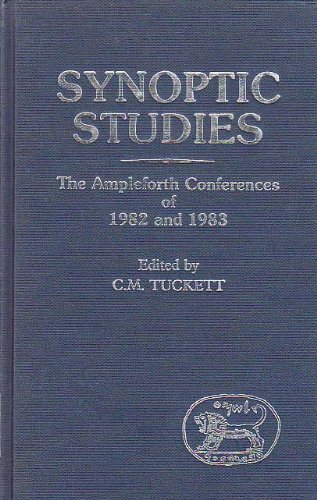 Writing in 1984 Alexander considered his New Testament peers to be poorly aware of the real nature of midrash because their knowledge of it was limited to “general discussions in handbooks and introductions.” He observes that many scholars begin by defining midrash according to its etymology:
Writing in 1984 Alexander considered his New Testament peers to be poorly aware of the real nature of midrash because their knowledge of it was limited to “general discussions in handbooks and introductions.” He observes that many scholars begin by defining midrash according to its etymology:
Most New Testament scholars who offer a definition of midrash begin by defining the word ‘midrash’ itself. Thus Raymond Brown: ‘In Biblical Hebrew the verb darash means to “seek, inquire, investigate, study”; and according to the pattern of the Hebrew noun formation midrash should designate the product of such study or investigation’. More colourfully, Michael Goulder: ‘The word midrash derives from darash, to probe or examine. Revelation is a bottomless mine of wealth: no pious man can be content to take what merely lies on the surface—he must darash, dig and bring up treasure. There are seventy faces to scripture: we must darash, examine it, and find it revealed from glory to glory.’
Alexander is not impressed by such efforts (my emphasis):
I find this a most unpromising place to start. It leads to vague talk about ‘midrash in general’; it smacks of the etymological fallacy; and it tends to open the way for anachronistic explanations of the rare, pre-Rabbinic occurrences of the word midrash. The fact is that, if, as we should, we play down etymology and insist on contextual definition, then we can have little idea of the meaning of the term midrash in Chronicles, Sirach and the Dead Sea Scrolls.
What should be the approach to understanding the nature of midrash?
The correct procedure in the definition of midrash should be to isolate a corpus of midrashic texts; to examine those texts in order to discover their characteristics; and then to consider the question of whether there are texts outside the corpus which possess the same features.
That may sound circular on a quick perusal but I don’t believe it is.
Alexander collects his corpus for study as follows:
In establishing a corpus of midrash on which to base our investigation, priority should be given to early Rabbinic literature. This seems to me inevitable. Midrash as a technical term in modern scholarship was borrowed from Rabbinics, having been first applied to Rabbinic literature. Rabbinic midrash is entirely suitable for our purposes: it is very extensive, and we can avail ourselves of an unbroken tradition of Jewish scholarship on it extending from the middle ages down to the present day. So then, the definition of midrash which I shall offer is based on a knowledge of such early Rabbinic texts as the Mekhilta of Rabbi Ishmael, Sifre, Sifra, Bere’shit Rabbah, Tanhuma, Pesikta Rabbati and Pesikta deRav Kahana. This is hardly a controversial procedure. We may disagree over whether or not we should call Philo’s Bible commentaries or the Qumran Pesharim ‘midrash’, but we will surely not quarrel over calling the texts which I have just listed ‘midrash’.
Alexander distinguishes between midrashic form and midrashic method.
1. Midrashic Form. The basic literary form of midrash is BIBLICAL LEMMA [i.e. the biblical text – my note] + commentary. The lemma may come from a continuous section of Scripture, such as the book of Genesis (cf Bere’shit Rabbah), or it may be from a catena of Scriptural passages, such as the festival lectionary (cf. Pesikta deRav Kahana). The lemma identifies the segment of Scripture under discussion and ‘keys in’ the commentary to Scripture. . . . In practical terms . . . there is no danger of confusing Scripture and commentary in Rabbinic midrash, and it would be a very serious mistake to imagine that Rabbinic midrash ‘dissolves’ Scripture in the commentary in the way in which Jubilees carries Genesis ‘in solution’.
The commentary reveals the following formal features:
(i) It quotes freely verses of Scripture as proof-texts . . . .
(ii) The darshan is particularly fond of stringing Biblical verses together . . . .
(iii) He quotes named authorities—Rabbi Ishmael, Rabbi Akiva, Rabbi Joshua, and so on.
(iv) He cites different and sometimes contradictory interpretations of the same verse, word, or phrase, often introduced by the formula davar aher—‘another interpretation’.
(v) He commonly employs meshalim (‘parables’), especially to resolve theological problems. These are commonly introduced by the formula, mashal le-mah ha-davar domeh—’A parable. To what may the thing be likened?’
Is this set of characteristics sufficient to set off midrash from the other Rabbinic literary genres? On the whole I think that it is.
Interestingly, Alexander notes that this way of treating a head text was not unique among Judeans:
Certainly many of their methods were common to scholarship in late antiquity and can be paralleled in the exegetical practice of the Greek schools. (p. 5)
Next, he looks at midrashic method.
2. Midrashic Method. Defining midrashic method is much more difficult than defining midrashic form. The character of midrash is determined by the fact that it is an activity related to Torah, and so to understand midrash it is essential to consider the nature and function of Torah in the Rabbinic scheme of things. According to classic Rabbinic theology . . . Moses received the Torah on Sinai in two forms, as Written Torah . . . and as Oral Torah . . . . The former is embodied in Scripture, the latter in Tradition. . . . By classifying their traditions as Oral Torah, and by tracing them back to the same revelatory event which gave birth to the Written Torah, the Rabbis were giving divine sanction to the extensive body of laws, customs and teachings which they had received from their predecessors. In no uncertain way they were raising Tradition to the same status as Holy Writ. . . . [O]nly those belonging to the circles of the Sages and scholars who stand in a direct line of succession leading back to Moses himself can be regarded as the recipients of authentic tradition; no one else qualifies. . . .
For the Rabbis, then, Torah was to be found in two places — in Scripture and in Tradition. . . . Somehow a way had to be found of meshing Scripture and Tradition which would make them in a sense one, while at the same time preserving their individual identity. The Rabbis achieved this by presenting Tradition in the form of midrash on Scripture. . . . New ideas and developments within Judaism have to be legitimated by being brought into relation ship with Scripture: it must be shown that they are somewhere present in Scripture. . . .
So then, a major aim—perhaps one might say the major aim—of the darshan was to find ways of convincingly validating Tradition in terms of Scripture. (pp. 5-7)
Three core beliefs about Scripture enabled the process to work:
- Scripture never contradicted itself; one part of scripture could be interpreted in the light of any other part and harmonized with it;
- Scripture is polyvalent. It contains many different layers of meaning. There is no single true meaning to a passage.
- Scripture is inerrant. Apparent errors had to be explained away.
Midrash involved both exegesis and eisegesis. Meaning was drawn out of scripture but it was also read into scripture. Ingenious ways of finding ways to make scripture support oral tradition were regularly found.
Alexander gives an example of how this works and I quote in full:
Perhaps I can give some substance to these remarks by citing the example of how Rashi handles the story of Creation in Genesis 1-2. Rashi is, of course, far removed in time from the period with which we are concerned, but at this point he is typical, I believe, of the earlier scholars, and the illustration is so neat that I find it hard to resist. Even a casual reader of Genesis 1-2 must be struck by the fact that there appear to be two accounts of Creation—one in Gen. 1.1-2.3, the other in Gen. 2.4-25. A more attentive reader may also note that there is a variation in the divine names corresponding to these two accounts: the first uses Elohim, the second Yhwh Elohim. Modem Bible scholars, of course, explain these facts by means of the documentary hypothesis: Genesis 1-2 combines two originally distinct sources (P and J-E). Rashi equally notes the facts, but his assumptions about the nature of Scripture will not allow him to reach the same conclusions as the modem scholar. He starts from an early Rabbinic idea that there is a correlation between the divine name Elohim and God’s attribute of justice, and between the name YHWH and his attribute of mercy. He argues that God first intended to create the world on the basis of strict justice, but realizing that if he were to do so the world could not endure, he decided to temper justice with mercy, and, indeed, since the name Yhwh in the second account of Creation precedes Elohim, to give mercy precedence over justice:
In that Rashi observes and tries to explain the problem of the two accounts and the variation of the divine names he is behaving as a true exegete. Any interpreter, whether ancient or modem, should tackle this problem. But the objective problem offers him the opportunity of reading into the text certain Rabbinic ideas about the tension between the divine attributes of mercy and justice which can hardly have been in the mind of the original redactor of the Pentateuch. (pp. 8f) |
We have seen up to this point that the function of midrash was to harmonize Scripture and Scriptural authority in line with oral traditions.
Next, Alexander surveys the methods midrash uses to achieve these aims. These, he says, are legion. The idea can be captured with the following:
Scripture could be interpreted by Scripture, word-play exploited, names etymologized, and even the numerical value of words and phrases computed (a device known as gematria).
So far Philip Alexander’s definition of midrash has covered a far greater scope than attempts to extrapolate from the meaning of the word’s root. Before addressing the way a number of New Testament scholars have applied the term to the gospels Alexander draws special attention to “four general characteristics” of this rabbinic form of exegesis. Again, all highlighting is my own.
Four general characteristics
First, midrash is in no sense a substitute for Scripture, or a rewriting of it. Scripture remains intact and it is presupposed that the reader will have it in front of him, or have it in his mind, as he reads the midrash. . . . Midrash, then, is laid side by side with Scripture. It has no independent life of its own.
Next,
Second, midrash is argumentative. On the whole it does not lay down the law or offer cut-and-dried statements. It frequently sets out a number of different opinions and debates their merits. . . . . New Testament scholars sometimes speak of ‘crypto-midrash’. If by this they mean that, contrary to appearances, a given text is an interpretation of some unquoted verse of Scripture, or that some piece of Bible exegesis depends, in fact, on an unquoted Biblical verse, then the notion is decidedly odd in the context of Rabbinic midrash. I cannot believe that the Rabbis would have seen any advantage in this sort of obliqueness and subtlety. They strove to make things as explicit as possible. (p. 10)
The third point aims another blow at classifying gospel narratives as midrash:
Third, midrash normally has a point of contact, a ‘peg’ in the text on which it hangs. It is a disciplined pursuit, not a fantasia on the text of Scripture. The game of midrash is demanding, its rules complex and strict. . . . Certain New Testament scholars who believe that the infancy narratives in Luke are loosely modelled on Old Testament stories such as the birth of Samuel, apparently want to call such free adaptation of Bible midrash. I am convinced they are mistaken, for in so doing they seem to be denying the tightly controlled and closely argued character of midrash. Some imaginative borrowings from Old Testament may, perhaps, be found in certain folkloristic aggadot, but it gets us nowhere to label this phenomenon ‘midrash’.12
Aggadot. We return to R. M. Price’s entry on page 534 of the Encyclopedia of Midrash and his discussion of haggadic midrash. What does Philip Alexander have to say about that?
12. It is often forgotten that not all aggadah is midrash. There is a vast body of Rabbinic tradition, much of it collected in Ginzberg’s Legends of the Jews, which bears little or no relation to the Biblical text, even though it is about Biblical personages and events: it is ‘lifted off’ from the Bible, has its own, independent life, and develops with its own inner logic, which is not midrashic. In its nature and development it is akin to the hagiographical tales about the great Sages, such as Akiva and Yohanan ben Zakkai. There is much to be said for the view that folklore studies provide the key to the evolution of this non-midrashic aggadah. See Dan Ben-Amos, Narrative Forms in the Haggadah: Structural Analysis, Ph.D. Dissertation, Indiana University, 1966; J. Heinemann and D. Noy (eds.), Studies in Aggadah and Folk-Literature = Scripta Hierosolymitana 22 (1971), especially Z. Kagan’s article, ‘Divergent Tendencies and their Literary Moulding in the Aggadah’, on pp. 151-70 of this volume. The body of non-midrashic aggadah can function in a manner similar to the body of non-Biblical religious custom. The darshanim can take elements from it and try to read them back midrashically into Scripture.
(p. 17)
Finally,
Finally, it is evident that the darshanim felt they were working within a very definite, on-going tradition of scholarship. They seemed to regard themselves primarily as the transmitters of the tradition. In passing on the traditions which they received, of course, they modified and ‘improved’ them, but such modifications are often external and intended, with the minimum of change, to adapt the tradition to its new context. They did not set any great store by originality: they took from others whatever they wanted (usually without acknowledgment) and adapted it as they saw fit. They sank their individuality and adopted a general, anonymous midrashic style. I doubt very much whether it is possible to identify the individual approach or style of a single early Rabbinic exegete. The darshanim were engaged in a collective enterprise: they lent generously, borrowed freely, and lived with their hands in each other’s pockets.
(p. 11)
From this point Philip Alexander focuses on specific instances of interpreting gospel passages as midrash. I’ll cover that in another post.
Alexander, Philip S. 1984. “Midrash and the Gospels.” In Synoptic Studies: The Ampleforth Conferences of 1982 and 1983, edited by Christopher M. Tuckett, 1–18. Sheffield, Eng.: JSOT Press.
Neusner, Jacob, and Alan J. Avery-Peck, eds. 2005. Encyclopaedia of Midrash: Biblical Interpretation in Formative Judaism. 2 vols. Leiden ; Boston: Brill.
Goldberg, Edwin C. 1996. Midrash for Beginners. London: Jason Aronson.
Goodacre, Mark. 2000. “5207 Re: [XTalk] Midrash vs. Mythologization.” XTalk: Historical Jesus & Christian Origins. https://groups.yahoo.com/neo/groups/crosstalk2/conversations/messages/5207.
Spong, John Shelby. 1997. Liberating the Gospels: Reading the Bible with Jewish Eyes. San Francisco, CA: HarperOne.
If you enjoyed this post, please consider donating to Vridar. Thanks!

Interesting.
But all this assumes that those doing the exegesis/eisogesis or midrashic interpretations of the scripture were fully Hebraic practitioners. I don’t think that that is who was creating the gospels. Instead, I suspect that what we had were the Grecophonic goyim who sought inclusion in the Hebraic communities where midrash was done. But, when excluded by the demands, they spun off their own non-Hebraic community that engaged in massive cultural appropriation and began doing their own reinterpretations of scriptures…the scriptures they liked and the concepts they found intriguing and hopeful. They mimicked their Hebraic neighbors and created their own savior and community by engaging in their own ‘midrash’ of the scriptures they had available and revered.
Alexander’s definitions and explanations match my experience as a reader of Rabbinical literature. Anyone who is interested may look at Sefer Ha-Aggadah: The Book of Legends by H. N. Bialik and Y. H. Rawnitzky. The first part is midrash aggadah exactly in the structure described here. Each piece starts with a quote from TaNaKh, and it is not hard to understand what the commenter was trying to answer.
Oh, the humiliation! I spoke of Anderson throughout when his name is really Alexander. (Have corrected the post and preceding comment.)
The word midrash always seemed to me to be a fancy expression that should place the Gospels in a Jewish background. The literary method of adaption, allusion and citation, however, played a major role in all ancient literatures since the first century BC and is imho better described as Dionysian imitatio
https://en.wikipedia.org/wiki/Dionysian_imitatio
Thank you Neil for more amazing insights into Biblical criticism. I do agree with Jack Spong that the Jesus of the modern day church never lived. And we mean it in the sarcastic not mythical sense i.e. if there was a single real person on whom the NT is focused then he was very different to the NT character we are supposed to believe in. The concept of Midrash seems to me to conveniently justify the authority and relevance of legends of old. Many scholars today seem to prefer to risk throwing the baby out with the bathwater. I respect that many want to save the baby rather than, like me, not a scholar, are still stuck on the question of whether there was in fact a baby.
.
While I like KK’s comparison (above) to the academic use of Dionysian imitation, personally I identify better with the Greek use, in what I call a superstitious context, of aretology, see
.
https://www.revolvy.com/page/Aretology
.
which says (footnote references removed) :
.
Quote
.
An aretology (from ancient Greek aretê, “excellence, virtue”) in the strictest sense is a narrative about a divine figure’s miraculous deeds. In the Greco-Roman world, aretologies represent a religious branch of rhetoric and are a prose development of the hymn as praise poetry. Asclepius, Isis, and Serapis are among the deities with surviving aretologies in the form of inscriptions and papyri. The Greek aretologos (ἀρετολόγος, “virtue-speaker”) was a temple official who recounted aretologies and may have also interpreted dreams.
By extension, an aretology is also a “catalogue of virtues” belonging to a person; for example, Cicero’s list and description of the virtues of Pompeius Magnus (“Pompey the Great”) in the speech Pro Lege Manilia. Aretology became part of the Christian rhetorical tradition of hagiography.
In an even more expanded sense, aretology is moral philosophy which deals with virtue, its nature, and the means of arriving at it. It is the title of an ethical tract by Robert Boyle published in the 1640s.
.
Unquote
.
I think there’s room for all our emphases, despite my focus on the historical facts, evidence and political intrigue.